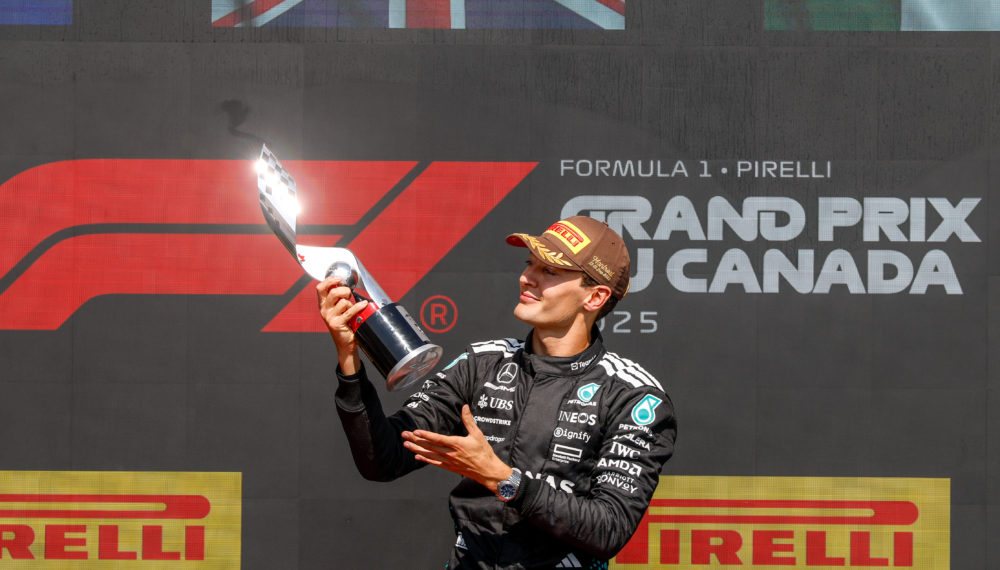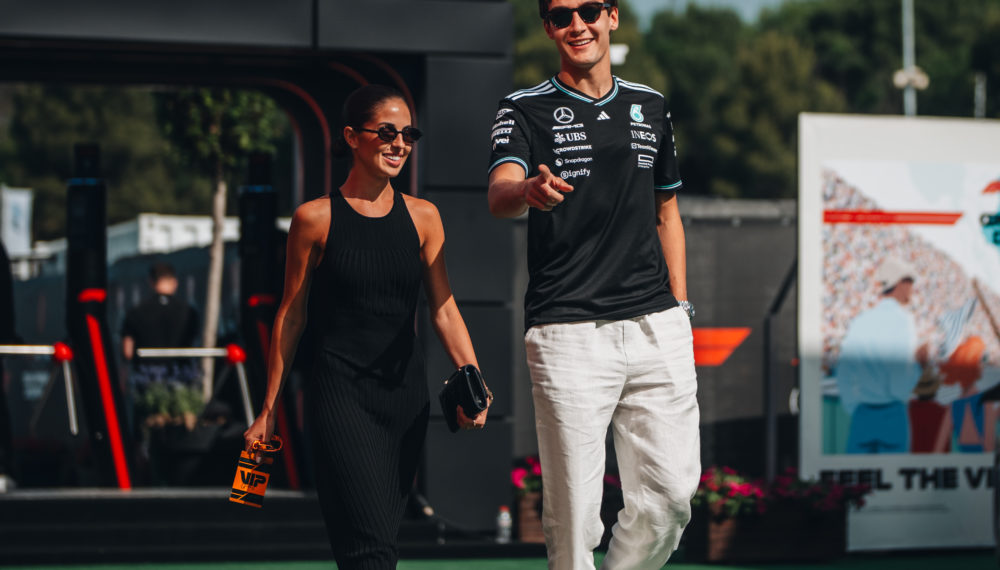July 4, 1954 was a golden day for German sport. Whilst the national football team was lifting the World Cup in Bern, Switzerland, over the border in France Mercedes-Benz was celebrating its return to Grand Prix racing in equally majestic fashion. The Silver Arrows sealed a one-two victory on the Reims circuit, the streamlined speed machines finishing a full lap ahead of their pursuers. The rivals were stunned.
The automotive world had come to expect the unexpected from Mercedes. However, the team’s scarcely believable performance after fifteen years away from the Grand Prix arena was era-defining stuff. The secret was an obsessive pleasure in achieving perfection, reflected in the team’s preparation, the technical make-up of the cars and the performance of the overall package in the race itself.
The decision
The Daimler-Benz Board meeting in Stuttgart in March 1953 was a routine affair until the subject turned to motor sport, how the company could be most effectively involved and whether competitive action on the track could be used to boost exports. The decision was duly taken to bring the Mercedes-Benz brand back into Grand Prix racing the following year.
The preparations
The strategists and engineers had just about one year in which to build a competitive racing car more or less from scratch. It received the internal designation W 196 R and was a completely new design – too much had changed in the rules and regulations of Grand Prix racing, and automotive technology had also moved on in the company’s absence from the track. For instance, the 1954 season brought with it new regulations limiting the cars to either 2.5 liter naturally aspirated engines or 750 cc supercharged units.
Mercedes plumped for the naturally aspirated option, the superior output and torque potential at low engine speeds, broader overall rev range and lower fuel consumption of this design tipping the scales in its favor. The result was an eight-cylinder in-line engine constructed out of two blocks of four cylinders with central power output and tilted to the right in the engine bay in order to lower the car’s center of gravity. Although the initial design featured four Weber twin carburetors, the decision had already been taken to have a mechanical direct injection unit in place come race day. The Bosch system on offer improved output and fuel economy but would only just be ready in time. Another special feature of the engine was its desmodromic valve control. Rather than relying on spring pressure, the engineers adapted the system so that a rocker arm not only opened the apertures but also closed them again (forcibly) in order to ensure efficient performance at high engine speeds. These ingredients combined to produce smooth power development throughout the speed range and make the engine extremely robust. The engine initially developed 257 hp at 8250 rpm, later squeezing out as much as 290 hp.
The space frame concept had already proved highly successful in the 300 SL racing sports car for the 1952 season, convincing Mercedes-Benz to use the same concept in the W 196 R as well. The frame’s tubular bars only needed to withstand compression or tension loads. At 36 kilograms the frame may have been extremely lightweight, but it was also deceptively strong. The sophisticated chassis of the W 196 R with double wishbones, single-joint swing axle and low pivot point also constituted an impressive feat of state-of-the-art automotive engineering.
The body of the Mercedes-Benz W 196 R which lined up on the grid in Reims prompted widespread amazement. The new racer was covered from head to toe (and including the wheels) in an extremely lightweight and streamlined magnesium body. This ground-breaking design, which needed a loop-hole in the race regulations to see the light of day, gave the W 196 R a huge boost on high-speed circuits such as Reims. Indeed, the car’s performance advantage over the less aerodynamic monoposto design of its rivals was quantified at a remarkable four seconds per lap. The only drawback for the Mercedes drivers was that they could no longer take their bearings from the wheels when lining up the apex of the next corner. The W 196 R later appeared with a monoposto body on twistier circuits which demanded greater agility.
The final weeks
Racing manager Alfred Neubauer had assembled a team of three drivers: Juan Manuel Fangio, Karl Kling and the talented youngster Hans Herrmann. The moment their W 196 R racers were ready for action, the three drivers embarked on an unremitting program of testing, first and foremost on the Hockenheimring. On June 21, 1954, they were registered for the race in Reims by telegram. One day later, the team arrived in Reims for a private practice session, the French authorities having sealed off the public roads which made up the race course to regular traffic. The engines were proving to be remarkably reliable, with technical problems conspicuous only by their absence. The team’s lap times were extremely promising.
Practice
On Friday July 3, the cars and drivers arrived for another practice session. The Silver Arrow engines now enjoyed the added benefits of a direct injection system, delivered bang on schedule. Whilst the power units for Fangio’s W 196 R and Kling’s car (chassis numbers 3 and 5) had proved their mettle on the test bench in Stuttgart, time constraints meant Hans Herrmann’s engine (chassis number 2) had been forced to skip this extra fine-tuning stage.
The qualifying session on Saturday was extremely successful. Fangio and Kling would begin the race from first and second on the grid with only the 1953 World Champion Alberto Ascari for company on the front row in his Maserati. Behind them was the first of the Ferraris, piloted by José Froilan Gonzalez, and Onofre Marimon in the second Maserati. Hans Herrmann qualified on the third row in his Silver Arrow and was flanked by Thailand’s Prince Bira, also in a Maserati, and Ferrari driver Mike Hawthorn. It was an illustrious field, illuminated by some of the defining names of the era.
Despite the apparent success of practice and qualifying, there was still a palpable sense of unease in the Mercedes-Benz camp, with average fuel consumption too high for comfort. It was a rather rainy weekend, and the wet track appeared to be pushing up the amount of gasoline required. Rudolf Uhlenhaut it was who came up with the solution. He climbed into his lightning-quick 300 SL and set out on the road to Stuttgart. There, he had three auxiliary fuel tanks put together overnight before heading back to Reims where the tanks were installed at the last minute, to complete the 506 kilometer race without refueling.
The race
It was July 4, 1954 and 40 years to the day since Christian Lautenschlager had sealed victory in the 1914 French Grand Prix in Lyon at the wheel of his Mercedes. Now three Silver Arrows of the new generation were lining up at the start of the 41st Grand Prix d l’ACF in a 21-strong field. The 8.301 kilometer triangular course outside the city of Reims was to be completed 61 times, taking the cars on a journey spanning a full 506 kilometers. The Reims circuit put the cars’ brakes and engines under extreme loads – two of the three corners were extremely tight, one hauling the racing machines down to 80 km/h, the second demanding fierce deceleration from 260 km/h to 60 km/h. It was a spectacle enjoyed by 300,000 spectators at the trackside.
At 2.45 p.m. sharp the starting flag sent the cars roaring on their way. Ascari’s race was over almost before it had begun, his engine giving up the ghost on lap one. That meant that Gonzalez and Hawthorn were now breathing down the necks of Fangio (car number 18) and Kling (car number 20). Hans Herrmann (car number 22), meanwhile, was flying and caught up with the leaders. After seven laps, he had left Hawthorn in his slipstream and four circuits later he passed his teammate Fangio. This supreme effort included a lap record of two minutes and 32.9 seconds at a speed of 195.463 km/h. The W 196 R cars now occupied the top three places and the field was strung out around the track. Gonzalez, however, refused to buckle, attacking once more and reclaiming third position. His resurgence, though, lasted only a few more kilometers before the engine blew and man and machine disappeared under a cloud of smoke. Hawthorn had already been forced to retire from the race by that point, leaving the three silver Mercedes-Benz out on their own.
“And that’s how we would have finished,” recalls Hans Herrmann. Unfortunately, the young driver’s luck deserted him spectacularly on lap 17. “The engine suddenly lost all output and eventually shut down completely.” In the end, it seemed the engine’s lack of time on the test bench had come back to haunt him.
By the time the drivers crossed the line for the 36th time, the field had been whittled down to just seven cars. Only Fangio and Kling were still looking lively and lapping at an even pace. The crowd were entranced as the two drivers took turns to hold the lead, the cars flying past in a blur of excitement. As for the duel of the elements, the sun eventually prevailed on the 42nd lap, lighting up the Champagne countryside and bathing the circuit in a warm glow. Ten laps to go, and the pack were now almost the length of the circuit behind the runaway leaders, with Fangio and Kling locked in a battle of their own. As they entered the penultimate lap, however, German radio commentator Reiner Günzler thought it was all over. “Karl Kling’s won the race! He’s 15 meters ahead of Fangio! Over the last few meters he’s turned the screw again – although you have to say he’s not really eased off all afternoon.” After 500 kilometers of racing Kling looked the clear winner, but there was still one lap to go. “And it’s not over yet … full power through to the finish line … both of them neck and neck … and Fangio’s done it! Can you believe it? I’ll get it right this time. Fangio has won the French Grand Prix.” The Argentinean had indeed edged home by just half a car’s length, and Mercedes-Benz could celebrate a one-two victory 40 years after Christian Lautenschlager had tasted glory for the brand. In third place and a lap behind was Ferrari privateer Robert Manzon, prevailing in a private head-to-head with Prince Bira.
As they came to a halt, the two Silver Arrows were surrounded by a fascinated crowd. Indeed, the police had to form a corridor for the two drivers’ wives and other members of the Stuttgart-based team to greet the drivers. A flood of telegrams duly arrived, including one from the German football squad in Bern.
Daimler-Benz had every cause for celebration. The company had made a quite sensational return to Grand Prix racing and breathed fresh life into the history of the Mercedes Silver Arrows. The German magazine “Spiegel” featured racing manager Alfred Neubauer on its July 28 front cover with the pertinent caption “Win first, refuel later”.
The one-two finish in Reims was repeated five times in 1954/55, with four other victories bringing the team’s record to a total of ten wins in 13 Grand Prix races, plus several second, third and fourth-place finishes. Juan Manuel Fangio clinched the drivers’ title in the World Championship in that year as well as the following one. The return of Mercedes-Benz to Formula One had been a compelling success.














